By CMDR Mark R. Condeno, Philippine Coast Guard
Introduction
On Sunday June 25, 1950, the existence of the Republic of Korea as a democratic nation was shattered when armored and infantry elements of the North Korean People’s Army crossed the border into Seoul. The surprise attack caught the Republic of Korea Armed Forces off guard who lacked the equipment to withstand a massive communist invasion.
On that same day, the United Nations Security Council Resolution Number 82 was enacted which called for the immediate withdrawal of the belligerent forces. After it went unheeded this prompted the world body to pass UNSC Resolution number 83 calling on member countries to support militarily the ROK in deterring communist aggression.
Although having its own counterinsurgency problem, the Philippines became the first Southeast Asian country to deploy troops in support of the UN cause and the Third member of the UN Body to do so. On September 7, 1950, President Elpidio Rivera Quirino announced the historic decision of the deployment of Filipino Soldiers to the embattled republic. It fulfilled the country’s obligation as a member and signatory of the United Nations and the interest of combating the spread of communism in the Asia-Pacific region.
Unknown to many, the Philippine Navy (PN) would actively participate in the Korean conflict. The five Landing Ship Tanks (LSTs) of the Service Squadron of the Philippine Navy, namely RPS Cotabato (T-36), RPS Pampanga (T-37), RPS Bulacan (T-38), RPS Albay (T-39), and RPS Misamis Oriental (T-40) would serve as the workhorse in transporting Filipino soldiers to and from Korea for five years. Another great significance for the service was the assignment of two Filipino naval officers at the Philippine Liaison Group-United Nations Command in Tokyo, Japan.
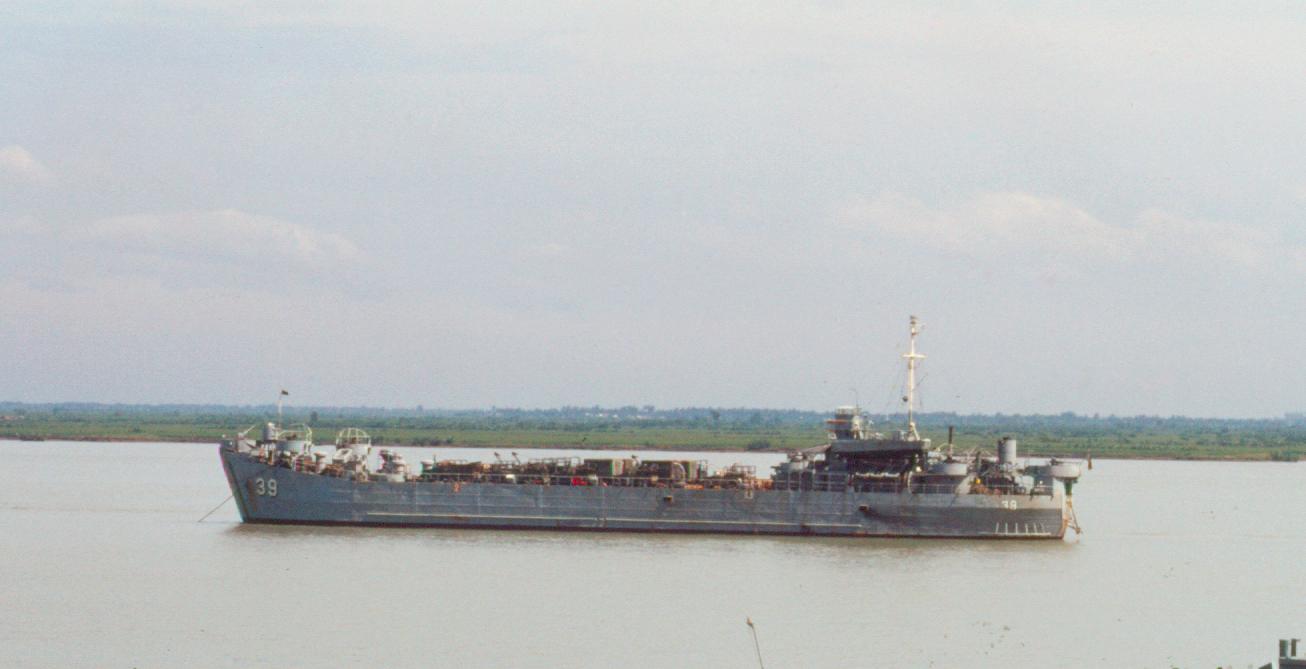
This paper seeks to provide a summary of the Philippine Navy’s role and exploits during the Forgotten War and the naval legacy that was fortified between the two navies after the conflict.
The Philippine Navy in 1950
Five years after the end of the Second World War saw the reestablishment of the offshore patrol (OSP). The swarm of former OSP personnel-turned-guerillas were eager to re-join their mother unit. A modest rearmament of the service followed as surplus naval vessels from the United States found its way to the OSP fleet in the form of patrol craft escorts (PCE), submarine chasers (SCs), patrol craft (PC), minesweepers (AM), and landing ship tanks (LSTs).
During that period the order of battle of the Philippine Naval Patrol (PNP) under Commodore Jose Francisco AFP (USNA ’31) comprised of the following: The fleet minesweeper and flagship RPS Apo (PS 21) which also served as the Presidential Yacht in which President Quirino and his cabinet met during the opening days of the Korean conflict. The Patrol Force under LCDR Heracleo Alano PN (PMA ’40) is composed of RPS Cebu (PS 28), Negros Occidental (PS29), Leyte (PS 30), Pangasinan (PS 31), IloIlo (PS32). The rest of the fleet is made up of 16 submarine chasers, six survey vessels, two landing craft infantry (LCI), one rescue tug, and six auxiliary ships.
Departure for Korea
Eight days after the signing of Republic Act 573 “Philippine Military Aid to the United Nations Act” by then President Elpidio R Quirino, the whole element of the 10th Battalion Combat Team boarded the U.S. naval transport USNS SGT Sylvester J. Antolak (T-AP-192) for a four-day voyage to the Korean peninsula. She was escorted from the vicinity of Corregidor Island up to the outskirts of the South China Sea by RPS Negros Oriental (PS 26) and RPS Capiz (PS 27). The battalion would be the first of the five BCTs, namely the 20th, 19th, 14th and 2nd to immortalize the Filipino soldiers gallantry and courage on the field of battle. Each Battalion would serve for about a year in Korea with the last troops leaving for Manila in 1955.
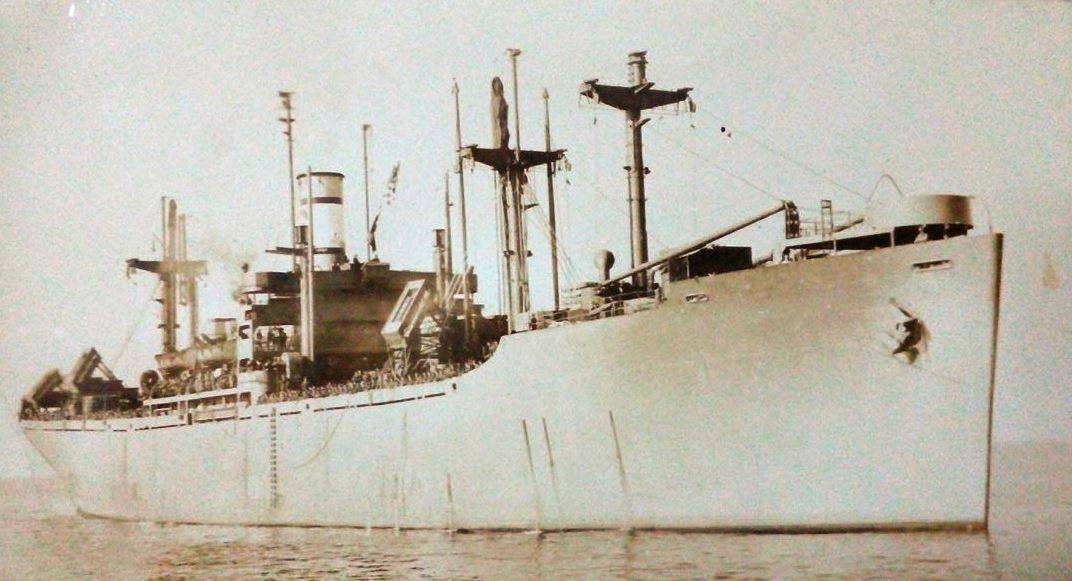
The combat service support operations of the Navy would begin with the homecoming of the 10th BCT in April 1951 aboard RPS Cotabato and the departure and return to and from Korea of the 20th, 19th, and 14th BCT’s. The 2nd BCT would have the distinction of being ferried to and from Korea aboard U.S. naval vessels.
Early Philippine-Korean Naval Relationship
Quite unknown from the early days of the ROK and the formation of the Korean Naval Defense Corps to the Korean Coast Guard (later becoming the Republic of Korea Navy), Filipino naval officers played a pivotal role as it brought in the first ships of the KCG to Korea from Subic Bay Naval Base. It was in August 1947 that then LTSG Ramon A. Alcaraz, PN (PMA ’40) was designated as head of mission to ferry former U.S. and British Royal Navy auxiliary motor minesweepers that would form the backbone of the Korean Fleet, where their ports of destination were 3 of the 7 ROK Naval bases namely Chinhae, Busan, and Seoul.
Another notable skipper of one of the ships to be transferred is LT Dioscoro E. Papa, PN (the Second Commandant of the Philippine Coast Guard). Later on at the outbreak of the Korean War in June 1950, now Commander Ramon A. Alcaraz would be the service squadron skipper of the five LSTs that served as the mainstay of the fleet in ferrying troops of the Philippine Expeditionary Force to Korea (PEFTOK) Battalion Combat Teams.
A Naval Officer in the Battle of Yuldong
On April 22-23, 1951 during the Chinese communist spring offensive which could have ended the conflict, Filipino soldiers, airmen, and sailors demonstrated prowess on the battlefield in the greatest defensive operation etched in the annals of Philippine military history. Although outnumbered 10 to 1, the 900 strong 10th BCT withstood a massive attack of the Chinese 12th Army at Yultong Ridge, known today as the Battle of Yultong (Yuldong).
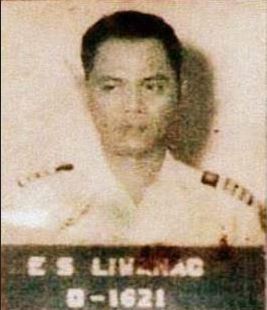
A notable naval role was the presence of then LCDR Emilio S. Liwanag, PN (PMA ’38) as the logistics and artillery officer of the 10TH BCT who commanded a battery of 105mm howitzers during the battle. LCDR Liwanag was a graduate of the Advanced Infantry Gunnery Course at Fort William Mckinley in 1950 days prior to his deployment to Korea. Early on, as a logistics officer LCDR Liwanag was also responsible in securing from an American depot a squadron of U.S. made M24 Chafee light tanks and heavy weapons for the tenth’s reconnaissance and heavy weapons company.
The Sea Voyage Rough Seas, Storms, and Typhoons
On the evening of September 30, 1951 the last elements of the 10th BCT would depart the port of Busan aboard RPS Cotabato under LCDR Florentino Buenaventura, PN, on a 2,400 kilometer voyage by way of Japan (as the LST would undergo four days of repair and provisioning at Yokusuka Naval Base). Upon reaching open seas they would encounter heavy gales and the ship’s entire complement mercilessly fought the waves for hours. As furious waves became stronger they sought refuge at Kagoshima Bay. On October 23, 1951 RPS Cotabato escorted by a pair of submarine chasers that entered Manila Bay with a tumultuous welcome from surrounding ships, a flyby from a formation of P-51 Mustangs of the PAF, and a jubilant crowd.
In September 1951 both RPS Cotabato and RPS Pampanga under CDR Tomas C. Robenul, PN would again undertake the task of bringing the second Filipino battalion the 20th BCT under Col. Salvador Abcede to the Korean theater of operations. A year later, the return voyage of the first batch (Albay) and second batch (Misamis Oriental skippered by LTJG Pablo Pascua, PN) of the 20th BCT would again be hampered by a tropical storm off Northern Luzon but the ships would go unscathed with the skillful maneuvering of the vessels officers and crew. A warm welcome and a jovial parade would again be received by the troops and sailors as they approached Manila’s Pier 7.
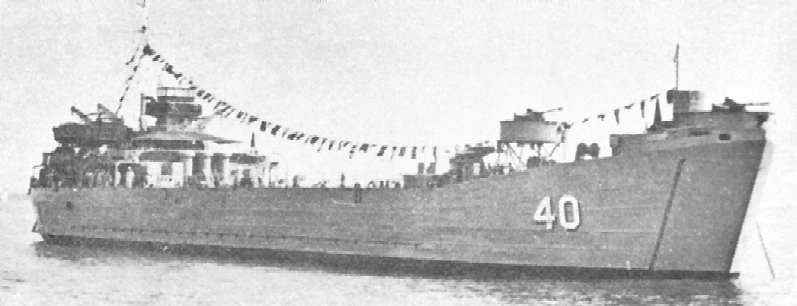
On March 1953 RPS Bulacan under CDR Tandiko Centi, PN – the First Filipino Muslim naval officer and LTSG Jose Ordonez, PN of RPS Albay – lifted anchor at South Harbor. Aboard the two ships was the fourth Filipino contingent to the UN Command, the famed 14th BCT also known as the Avengers, a veteran unit of the HUK campaign. Based on the book These are your Boys by the battalion itself, the passage was eventful with film showing singing and guitar playing among the soldiers and sailors and the chow line serving Paksiw (fish cooked and simmered in vinegar with garlic, salt and spices) and Sinigang na Bangus (stewed milkfish in tamarind broth).
From a 14th BCT veteran’s account the expedition to Korea was cut short as an essential stopover was made at Poro Point, La Union to repair and replace a part of the one of the ships engine. With these developments adding some free time sports competitions were held between the townsfolk and sailors stationed at the naval base with the PEFTOK troops emerging as winners. Four days later, the ships hauled anchor and again encountered rough and heavy waves often bigger than the ships seen at the Balintang channel, the crossroads of the South China Sea and the Pacific Ocean.
Twelve days after departing Manila, the Albay and Bulacan dropped anchor at the Port of Busan, although prior to entering harbor the troops and allied naval ships observed the proficiency of Filipino ships and sailors as anti-aircraft and anti-submarine drills were practiced with U.S. Navy counterparts involving one of their submarines which surfaced beside RPS Albay.

Prior to debarkation, the Avengers thanked the ships officers and crew along with CDR Octavio Posadas, PN (N4) who handled the administrative and logistical matters in support of the Philippine contingent.
Philippine-Liaison Group United Nations Command, Tokyo, Japan

As mentioned earlier, after his stint with the 10th BCT, CDR Emilio S. Liwanag, PN would serve as the Assistant Commander of the Philippine mission to the United Nations Command in Tokyo, Japan instead of CDR Santiago C. Nuval, PN (PMA ’38 and a future PN FOIC) as head of the mission. The veterans recall the massive support of the two officers to Filipino troops while in Japan. CDR Liwanag was also the senior naval advisor to the Philippine diplomatic mission in Korea which would earn him the U.S. Legion of Merit for valuable logistical assistance to Filipino troops in the Korean conflict.
Naval Legacy Braced by War
The LSTs mentioned were originally built from 1942-34 and eventually transferred to the Philippines in 1948 and would have a long career. They would again answer the call to arms with the deployment of Filipino troops during the Vietnam War. RPS Cotabato (a veteran of the 1944 Normandy landings) and RPS Pampanga were decommissioned in early 1978, while RPS Albay, Bulacan and Misamis Oriental were mothballed in 1979. The escort ship RPS Negros Oriental was transferred in 1948 and was sunk during a Typhoon at Guam in 1962. On the other hand, RPS Capiz was stricken from the Fleet list in 1979. The Flagship RPS Apo was acquired in July 1948 and would undergo several name changes as well as refits and served as a command ship into the 1960s. It was re-classified as a corvette of the Miguel Malvar class and eventually retired from the service in 1970.

24 years after the conflict, the Philippine Fleet would receive the ROKS Kyong Ki (DE-71) and ROKS Kang Won (DE-72) in 1977. The former was the ex-USS Sutton (DE-771) while the latter was the ex-USS Muir (DE- 770). The ships were of the Cannon-class destroyer escort type in which at that period the PN has three in its inventory, namely RPS Datu Kalantiaw (PS-76), RPS Rajah Humabon (PF-6), and RPS Datu Sikatuna (PF-5).
Regrettably, the Kyong Ki and Kang Won were never commissioned but were utilized as sources for spare parts for the three active units. Almost 20 years later another milestone in Philippine-Korea Naval relations occurred as 12 Haeksang and Chamsuri-class patrol craft were sold to the Philippine Navy at a friendship price as the Republic of Korea valued the splendid bilateral relations between the two countries that begun in 1949.
The Haeksang (Conrado Yap) and the Chamsuri (Tomas Batilo) class patrol craft entered the fleet in 1993 and 1995, respectively. These ships were acquired during the incumbency of then President Fidel Valdez Ramos, himself a Korean War veteran and reconnaissance platoon leader who captured Hill Eerie on May 21, 1952 against Chinese communist forces.
12 of the Haeksang and eight of the Chamsuri were transferred during those years and through the recommendation from the Philippine Navy to President Ramos on June 24, 1995 presidential approval was granted to name them after Filipino Korean War heroes and veterans, in which the lead ships were named after Captain Conrado D. Yap, PA and then 1LT Tomas G. Batilo, both of the 10th BCT PEFTOK.
The other units of both classes were named after the PEFTOK BCT Commanders, NCOs, and enlisted personnel who sacrificed their lives during the Korean conflict in the name of freedom and democracy.
Three years ago in 2015, the ROK Navy transferred the landing craft utility (LCU) ROKS Mulgae and announced the prior year what would be the second largest naval vessel allocation in terms of size and tonnage from the ROKN to the Philippine Navy in the handover of a Flight III Pohang-class corvette (Ex-ROKS Chung-Ju PCC-762).
Conclusion
Although none of the LSTs and submarine chasers were directly engaged in action around Korean waters, the invaluable role of their combat service support and escort operations along with the naval exercises conducted with allied navies in theater enabled the Philippine Navy to hone its tactics in the various aspects of naval warfare and contribute to the mission. The Navy’s mission enabled the Philippine Expeditionary Force to Korea (PEFTOK) troops to accomplish and succeed its its mission in upholding democracy against communism and maintaining the sovereignty of the Republic of Korea.
CDR Mark R. Condeno is the Liaison Officer, Foreign Armed Forces Attache Corps, International Affairs Directorate. He was briefly the Research Officer of the Office of the Naval Historian, Philippine Navy in 2007 and Projects Officer of the Maritime Historical Branch of the Fleet-Marine Warfare Center, Philippine Navy. He holds a BS Degree in Architecture from Palawan State University. He is a 1997 Graduate of the Basic Naval Reserve Officers Training Course, Philippine Navy and with the Bravo Class of 1999 Philippine Coast Guard Auxiliary Officer’s Indoctrination Course. He also took up the Aerospace Power Course from the Air University, United States Air Force in 2002. He is a longtime member of CIMSEC and published “Navies for Achipelago Nations” for CIMSEC’s 2013 Maritime Futures Project.
References
1. The Fighting Tenth by Major Mariano Manawis
2. These are your boys by the 14th BCT (PEFTOK)
3. Notes on the Korean War by the author
4. Veteran accounts as related to the author
5. Jane’s Fighting Ships 1981-82
6. Conway’s All the Worlds Fighting Ships 1947-1995
7. Newspapers from the 50’s detailing the deployment and return of Filipino Soldiers to and from Korea.
8. http://en.wikipedia.org/wiki/Emilio_S._Liwanag (Accessed 17 October 2013)
Featured Image: T 36 10th BCT- October 1951- Troops of the 10th BCT aboard RPS Cotabato (T-36) bound for Manila. (Photo Courtesy of the late 1LT Faustino Tumamak PA (Ret) 10TH BCT).

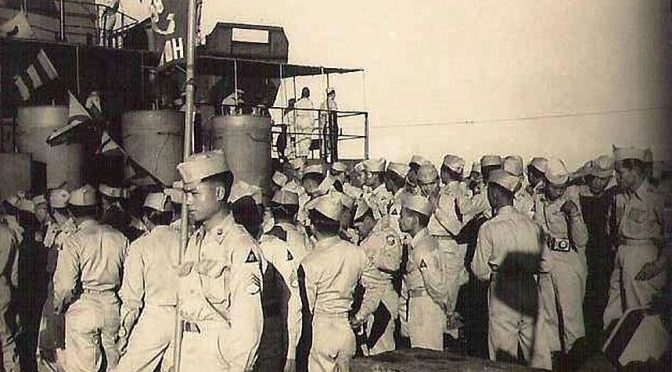
Very informative. Thank you